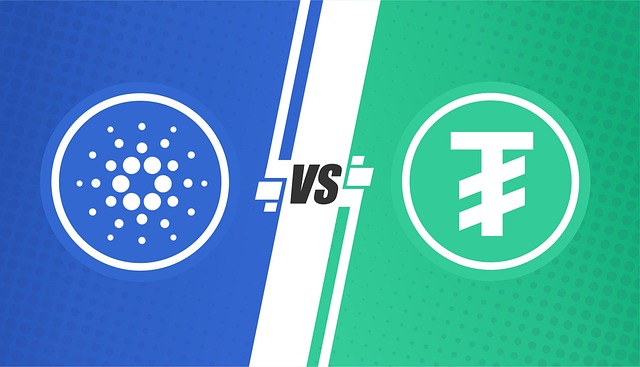This text compares Botox and dermal fillers for treating forehead lines (frown lines). Key points include:
– Both address different aspects of wrinkling: Botox relaxes muscles to prevent wrinkles, while dermal fillers add volume to smooth indentations.
– Botox offers gradual, long-lasting results (3-6 months) compared to dermal fillers' immediate but temporary effects (6-18 months).
– The choice depends on personal preference and skin type – Botox for temporary wrinkle reduction, fillers for longer-lasting line correction.
– Botox involves muscle relaxation and takes 15-30 minutes with minimal downtime, while dermal fillers inject substances beneath the skin.
– Aftercare instructions are important to optimize results and minimize risks after either treatment.
“Dreaded forehead lines are a common concern, but what if there was a way to smooth them out and regain a youthful appearance? Botox and dermal fillers offer effective solutions for managing dynamic lines and wrinkles. This comprehensive guide delves into the world of these popular treatments, exploring their mechanisms, benefits, and drawbacks in detail.
We’ll break down everything you need to know, from understanding the causes of forehead lines to comparing Botox vs. dermal fillers, and even walk you through the procedure and post-treatment care.”
Understanding Forehead Lines and Their Causes

Forehead lines, often referred to as frown lines or glabellar lines, are a common concern for many individuals seeking aesthetic improvements. These vertical wrinkles between the eyebrows can be deeply embedded and are primarily caused by muscle contractions, especially when we frown, squint, or make other facial expressions. Over time, these repetitive actions lead to the breakdown of collagen and elastin fibers in the skin, resulting in noticeable lines and wrinkles.
When considering treatments, many people often question Botox vs dermal fillers for forehead lines. Botox is a popular choice as it relaxes the muscles causing the lines, essentially preventing further wrinkling. Dermal fillers, on the other hand, add volume to the skin by smoothing out indentations, providing an immediate result. Each treatment has its advantages and is chosen based on individual needs and preferences, with some even opting for a combination of both for optimal results.
The Role of Botox in Treating Forehead Lines

Botox has emerged as a popular and effective solution for treating forehead lines, offering a non-invasive approach to cosmetic enhancement. Unlike surgical procedures, Botox works by relaxing specific muscles responsible for causing dynamic wrinkles, particularly those associated with frowning or squinting. By inhibiting these muscle contractions, Botox can significantly reduce the appearance of fine lines and wrinkles on the forehead, providing a smoother, more youthful complexion.
When compared to dermal fillers, Botox presents several advantages. Fillers are designed to add volume and plump up specific areas, but they do not address the underlying causes of wrinkles as effectively as Botox. Moreover, Botox has a longer-lasting effect, typically lasting between 3 to 6 months, whereas filler results may only last a few months, requiring more frequent treatments. This longevity makes Botox an attractive option for individuals seeking long-term solutions to their facial aging concerns.
Dermal Fillers as an Alternative to Botox

When considering treatments for forehead lines, it’s essential to explore alternatives to Botox, as every individual has unique preferences and concerns. One such option is dermal fillers, which have gained popularity in the aesthetics world. Unlike Botox, which works by relaxing muscles to prevent dynamic wrinkling, dermal fillers enhance the skin’s appearance by adding volume and plumping up depressed areas. These fillers are typically made of hyaluronic acid, a natural substance that our bodies produce, making them a safe and effective choice for many.
The allure of dermal fillers lies in their immediate results, providing a more substantial improvement in skin texture and contour. While Botox offers a gradual, long-lasting effect, fillers can instantly fill in deep wrinkles and creases, offering a quicker fix. However, the effects of dermal fillers are usually temporary, lasting between 6 to 18 months, after which a touch-up treatment may be required. In contrast, Botox results can last for several months, making it a preferred choice for those seeking long-term solutions.
Comparing Benefits and Drawbacks: Botox vs Dermal Fillers

When considering treatments for forehead lines, understanding the differences between Botox and dermal fillers is essential. Both are popular choices in cosmetic procedures, each with its unique advantages and drawbacks. Botox, a neurotoxin, works by relaxing muscles, preventing contraction that causes wrinkles. It’s a temporary solution, typically lasting 3-6 months, but offers quick results and minimal downtime. On the other hand, dermal fillers enhance skin volume by injecting hyaluronic acid or collagen into the dermis, smoothing out lines and adding definition. Fillers provide longer-lasting effects, often between 6-18 months, but may require touch-ups and carry a slightly higher risk of side effects like swelling or bruising.
The choice between Botox and dermal fillers depends on individual preferences and skin types. Botox is ideal for those seeking immediate yet temporary relief from dynamic wrinkles, while dermal fillers are better suited for patients aiming for longer-lasting results in reducing static lines. Consulting with a qualified dermatologist can help determine the most effective treatment for achieving youthful-looking skin.
The Procedure: What to Expect During Treatment

When considering Botox for forehead lines, understanding the procedure is key. During treatment, a qualified healthcare provider will inject small amounts of botulinum toxin into specific muscles in the forehead. This process typically takes around 15 to 30 minutes, depending on the area being treated and the individual’s needs. Unlike dermal fillers, which add volume by injecting a substance beneath the skin, Botox works by relaxing the target muscles, thereby reducing the appearance of dynamic lines and wrinkles.
Unlike Botox vs dermal fillers, where both aim to address skin concerns, their mechanisms differ drastically. Fillers plump up the skin by filling in gaps with hyaluronic acid or other substances, while Botox achieves results through muscle relaxation. The latter is particularly effective for fine lines and wrinkles caused by recurring facial expressions. Patients can expect minimal discomfort during treatment, and most return to their daily routines immediately afterward.
Recovery and Maintenance After Botox or Dermal Filler Treatment

After receiving a Botox or dermal filler treatment for forehead lines, it’s crucial to understand the recovery process and maintenance requirements. Typically, patients can expect minimal downtime with temporary redness and swelling subsiding within a few days. However, it’s essential to follow aftercare instructions provided by your dermatologist to optimize results and reduce potential risks.
In the weeks following the procedure, gentle skincare routines and sun protection are vital. Avoiding strenuous activities and direct sunlight helps prevent irritation and promotes healing. Additionally, regular check-ins with your healthcare provider ensure any concerns or complications are promptly addressed, whether you opted for Botox or dermal fillers—both offering effective solutions but with distinct characteristics.
